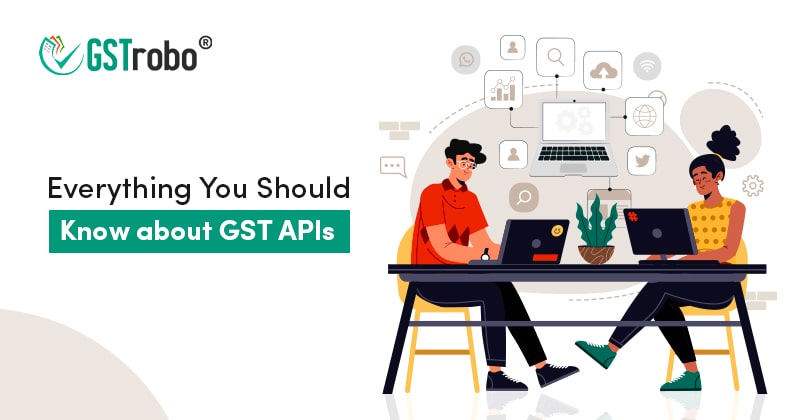Everything You Should Know about GST APIs
APIs are mechanisms that allow 2 software components to interact with one another via the use of a set of definitions and protocols. When you use a mobile phone application, it connects to the Internet and sends data to a server. The server then receives the data, analyses it, takes the appropriate steps, and delivers it to your phone. The software then analyses the data and displays the information you requested legibly.

What is an API?
API is an abbreviation for Application Programming Interface. In the context of APIs, the term Application refers to any system that performs a certain purpose. An interface may be viewed as a service contract between 2 software. This contract specifies how the two will communicate with one another via requests and answers. Their API description explains how developers should organize such calls and answers.
How do APIs function?
Client and server are used to describe API architecture. The application that sends the request is known as the client, and the application that sends the answer is known as the server.
APIs can function in a variety of ways depending on when and why they were built.
- SOAP Application Programming Interface
These APIs make use of the Simple Object Access Protocol. Both the client and the server use XML to exchange messages. This is a less versatile API that was more common.
- RPC Application Programming Interface
These APIs are referred to as Remote Procedure Calls. The client performs a function (or process) on the server, and the server returns the output to the client.
- Websockets Application Programming Interface
Another current web API development that uses JSON objects to convey data is Websocket API. A WebSocket API allows client apps and the server to communicate in both directions. Callback messages may be sent by the server to connected clients, making it more efficient than REST API.
- RESTful Application Programming Interface
These are the most popular and adaptable APIs available on the web today. As data, the client makes requests to the server. This client input is used by the server to start internal activities and deliver output data to the client. Let’s take a closer look at REST APIs now.
GST Application Program Interface (APIs)
The Goods and Services Tax Network (GSTN) has released various Application Program Interfaces (API) has been launched. To offer GST services to taxpayers, the government uses a platform strategy. Using these APIs developers can create standalone software for different GST compliances. This covers compliance services such as:
- Payment Information,
- Filing of GST Returns
- Registration for GST,
- Viewing the ledger, and even more
GSP Eligibility Criteria
GST Suvidha Provider is the digital platform via which taxpayers file GST returns. It helps with GST compliance by making it simpler to simplify data for increased convenience and security when registering, submitting invoices, filing returns, etc. To become a GSP you need to meet the following criteria:
An IT / ITES / BFSI firm with IT competency and the following parameters:
- Financial Stability:
a. Paid-up/Raised capital of at least Rs. 25 lakhs; and
b. Average turnover of at least Rs. 50 lakhs during the previous two fiscal years (2019-20, 2020-21).
Technical requirements
- All backend infrastructure, including as servers and databases, necessary expressly for GSP operations must be located in India.
- Owned or outsourced IT infrastructure capable of processing at least one lakh GST transactions per month, and
- A data privacy policy to protect the privacy of beneficiaries, and
- Data security measures in accordance with the IT Act
A contract will be made between the firm and GSTN if the foregoing prerequisites are met. A license key is generated once the contract is established. GST data is accessible via this licensing key.
Working API modules for the GSP
- Returns: This module uploads and updates different invoices as well as filing GST returns.
- Payments: This module tracks payment history, and displays challans for all group firms with the same PAN (Permanent Account Number).
- Ledger maintenance: This module displays the cash and input tax credit used for tax payments.
- Miscellaneous: This module features taxpayer and tax consultant searches, alerts, and so on.
If you are a company owner who is unsure about GST, feel free to approach the GST professionals at GSTrobo®. You may get thorough GST Registration and GST Return Filing support. You may also utilize our GST software to manage your GST compliance from start to finish.
